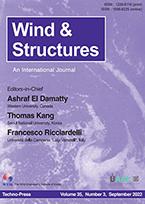“The Affective Aesthetics of The Body in Pain” - The Polish Journal of Aesthetics
PJA: Body in Pain 2018
- URL: http://pjaesthetics.uj.edu.pl/pja/aktualnosci_ang.php
- Call For Paper Type: Regular
- H2 Index: 0
- Submission Date: 2018-07-15
“The Affective Aesthetics of The Body in Pain”
The Polish Journal of Aesthetics No. 51 (4/2018)
Editors: Luz Mar González-Arias (University of Oviedo, Spain); Monika Glosowitz (University of Silesia, Poland); Miłosz Markiewicz (University of Silesia, Poland)
The pivotal category of affective aesthetics allows for analyses of literary texts and visual art conjoined with an important set of questions about the national, social, familial and sexual dimensions of embodiment. Affects — through artworks — function as forces which enable subjects to move and to be moved and, therefore, have the capacity to transform both individual and collective subjectivities. Physical pain — in all its degrees of intensity — is a constant presence in human life. However, it can be argued that only recently has it started to attract sustained critical attention. Virginia Woolf’s On Being Ill (1926) is a precursor of what is now considered a turn to illness: Elaine Scarry, Susan Sontag, Leslie Jamison, Audre Lorde and Johanna Hedva are among the many critics and theorists who have worked on what it means to inhabit a dysfunctional and/or ill body. We might even contend that there is a tendency across cultures and geographies to inscribe the body in pain into the artistic text in order to call for active interaction with the readership/audience. Such interaction would resist a mere aesthetic contemplation of the object of the artwork (namely, the body in pain) and instead inspire empathic and ethical engagements as well as social interventions.
In this special volume of The Polish Journal of Aesthetics we would like to explore—from a multiplicity of perspectives, cultural and historical contexts—the ways in which artistic projects shape distinct affective states of experiencing pain and illness. The concept of pain is here extended beyond physical distress to also embrace illnesses that may not have an associated sensation of bodily discomfort. Far from considering “the body in pain” as a unified category, we start from the idea that each illness, each pathology and each painful body part is the result of individual experience as much as of socially constructed notions of what it means to be in pain or to experience illness. Therefore, the collective and political potential of pain interests us as much as its phenomenology as a personal and individual experience.
We invite articles, essays, artwork and fiction related to, but not limited to, the following topics:
• Aesthetics and Medical Humanities — alliances and/or incompatibilities
• The semiotics of pain
• Ethical responsibilities in representing pain
• Pain as more than lack — beyond negative hermeneutics?
• Gendered illnesses, gendered pains
• The racial factors of pain
• Pain and violence against women
• Feminisms and solidarity among vulnerable subjects, ethics of care, affective labour
• The politics of sickness: definition of normality versus deviation
• Chronic, visible and invisible pains
• Narratives of pain and illness
The deadline for submissions is July 15, 2018.
Please note, that all submissions for The Polish Journal of Aesthetics take place exclusively by using online form “Submission”. Texts submitted by e-mail will not be considered.
Papers should be in English and should be thoroughly reviewed by English native speakers before submission. They should include abstract, a list of key words, bibliography, and a note on the author. All details are provided at http://pjaesthetics.uj.edu.pl/pja/do_autorow_ang.php
The Polish Journal of Aesthetics is a philosophical-aesthetic periodical which since 2001 has been published quarterly by the Institute of Philosophy of Jagiellonian University, Cracow, Poland. The journal has a long editorial tradition and is affiliated with one of the oldest European universities; at the same time, it is undergoing continuous systematic development. The editors’ goal is to implement and maintain the highest international publishing standards and practices, resulting in the publication of articles and papers on a high substantive level addressing important and timely issues concerning artistic performances and activities. Each year four volumes of the journal are published: two regular and two thematic, devoted to specific issues of aesthetics and philosophy of art, prepared in co-operation with experts in the given thematic field. Calls for papers for thematic volumes are sent out separately.
We invite you to visit our website at: http://pjaesthetics.uj.edu.pl/














